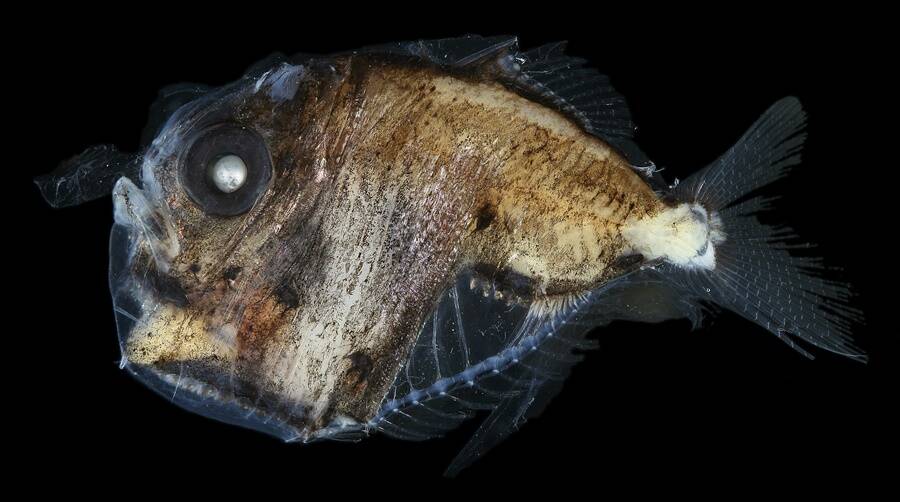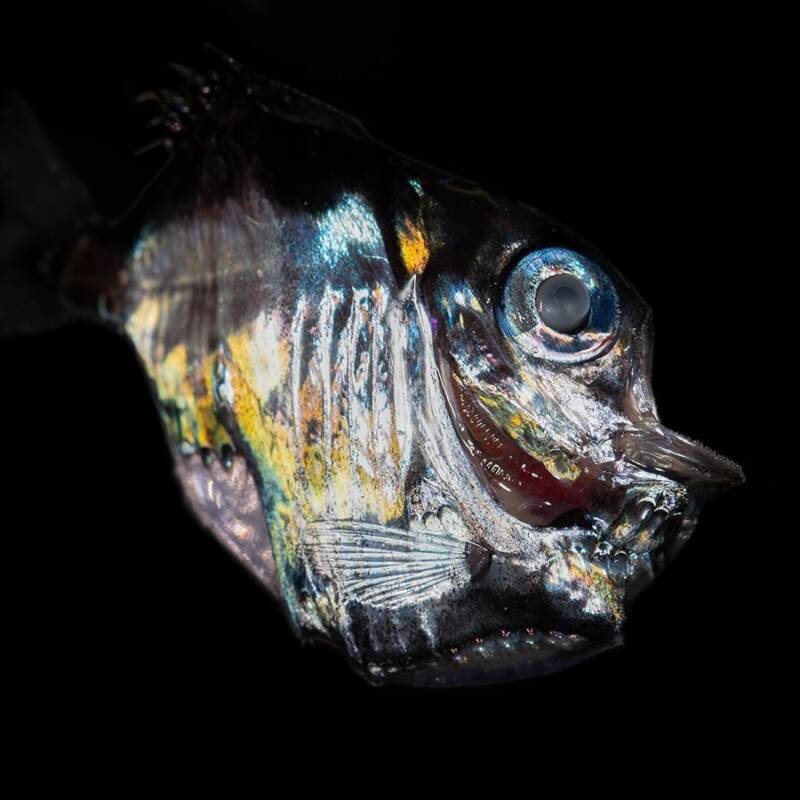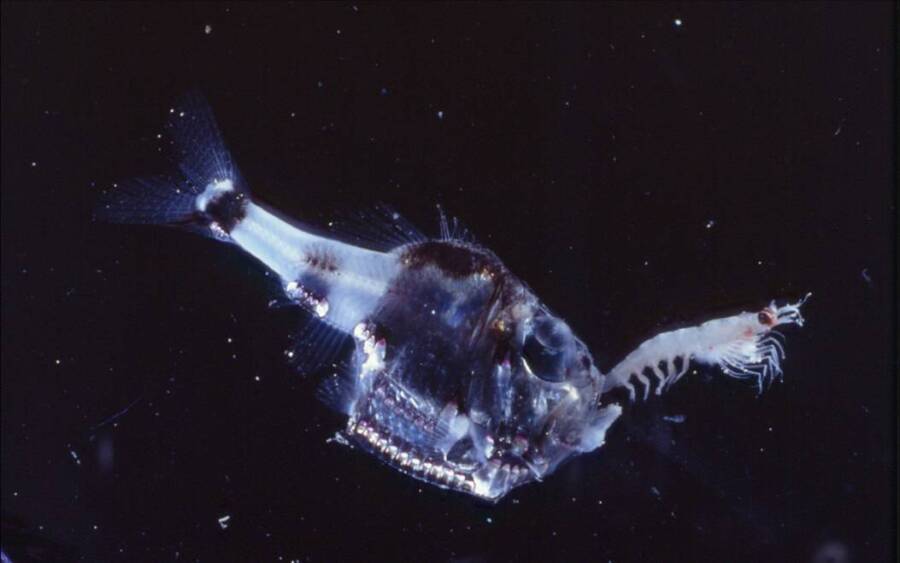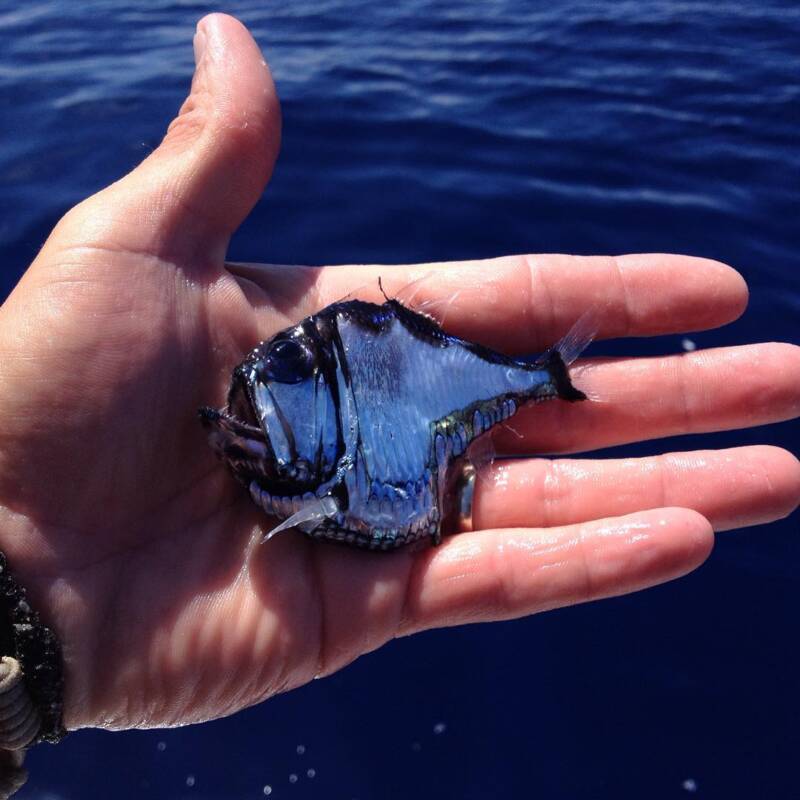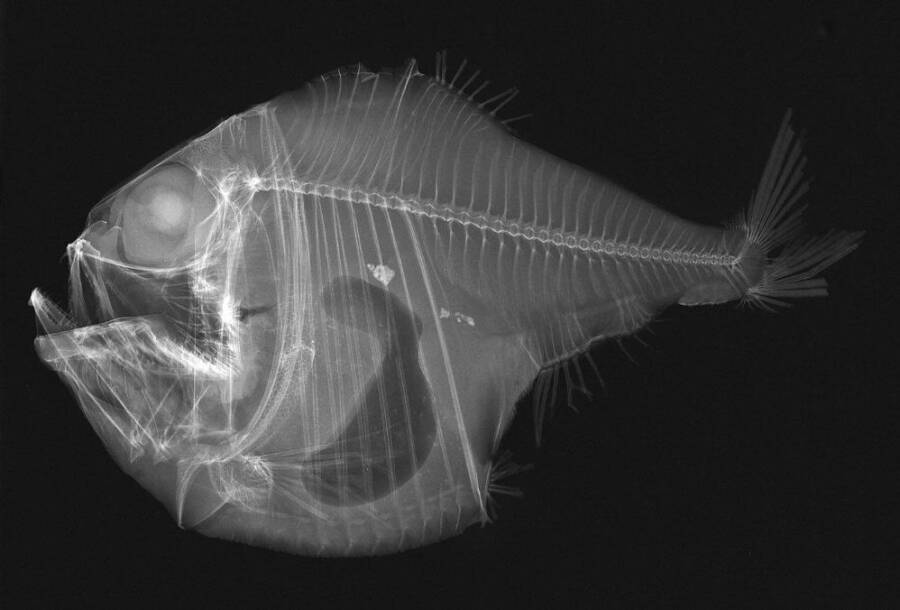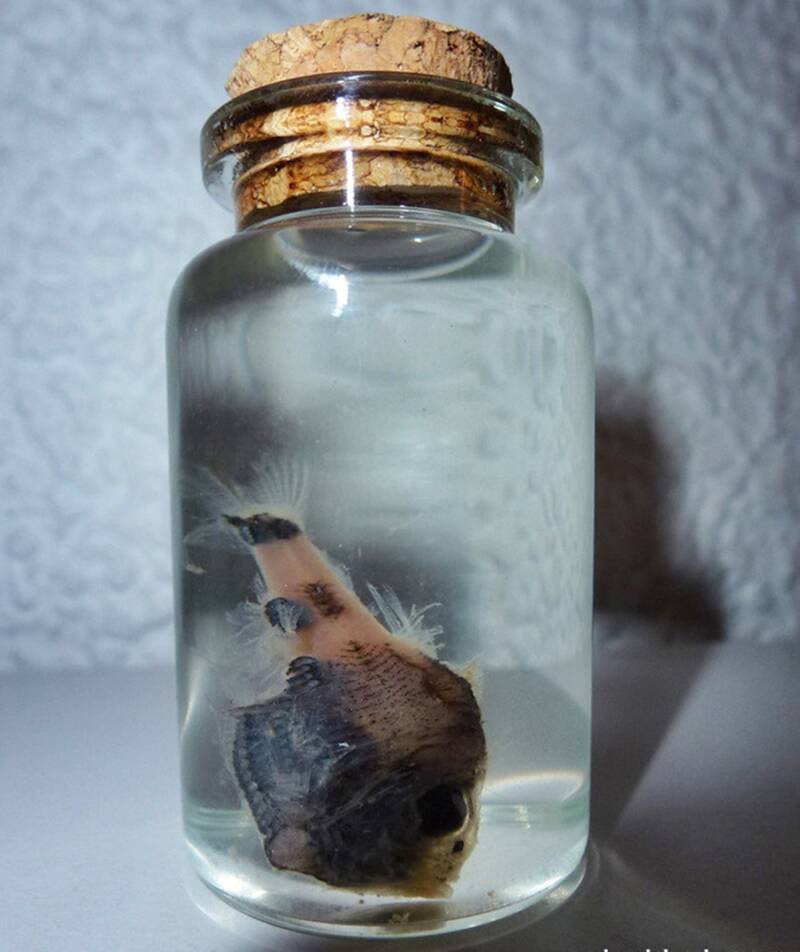The Deep-Sea Hatchetfish, The Weird Ocean Animal That Glows In The Dark
Given the extreme depths to which scientists must go to find the tiny yet frightful hatchetfish, little is known about them. The bizarre sea creatures derive their name from their razor-thin bodies, which resemble the blade of a hatchet.
These fish can typically be found nearly 200 feet below the surface of the Pacific Ocean, Indian Ocean, and the Atlantic Ocean. There are roughly 40 known species of hatchetfish that exist in the ocean with sizes ranging between less than two inches to five inches long.
Among the more well-known deep-sea hatchetfish species are the half-naked hatchetfish (Argyropelecus hemigymnus), the silver hatchetfish (Argyropelecus aculeatus), and the false oblique hatchetfish (Sternoptyx pseudodiaphana). As tiny deep-sea inhabitants, hatchetfish mainly prey on equally little crustaceans and plankton.
Besides its super thin body, deep-sea hatchetfish are easily distinguishable due to their beady eyes and luminescent exterior. Hatchetfish possess bioluminescent properties, which they can regulate depending on the conditions of their environment.
This ability is known as "counter-illumination." The light is emitted through a row of luminescent organs on the fish called photophores. These special organs allow this scary sea animal to emit a glow from their bellies that matches the color of the light around it, essentially rendering it invisible.
According to researchers, this form of camouflage works in both the deep sea and brighter waters near the surface. It's a skill that comes in handy when evading predators lurking in the depths of the ocean or when while swimming near the surface in search of food.
Even more remarkable, however, is the fact that each species of hatchetfish has its own distinct pattern of bioluminescent lighting.
